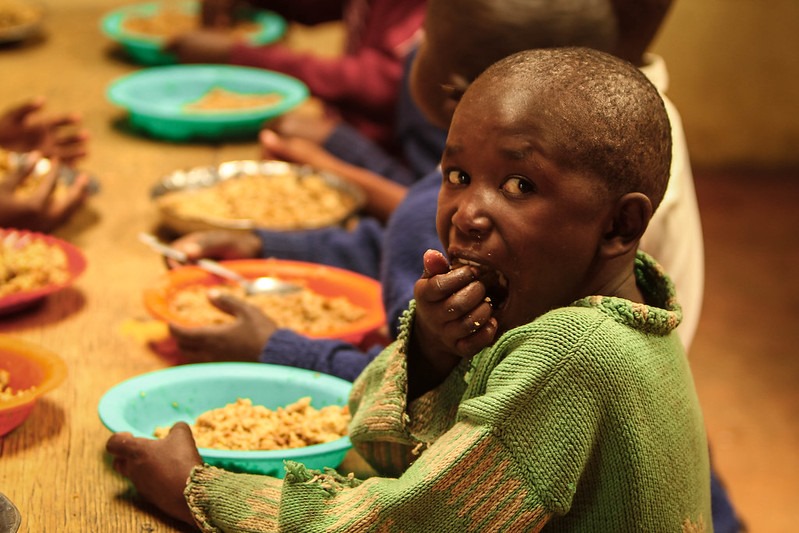A new study released by Food Security Situation Analysis says 34.7 million people across 27 states and the FCT will be food insecure or worse between June and August 2026. One of the key drivers of the projection is food imports that have weakened the rural economies and livelihoods of farming populations. As consumers are smiling over crashing price of food, farmers are crying for incurring colossal losses, vowing never to go back to farm. Sector players and stakeholders are urging the Federal Government to adopt initiatives like the buffer stock policies to stabilise farmer incomes and consumer prices, among other initiatives to strategically address food crisis in the country, GBENGA AKINFENWA writes.
A few weeks ago, the Vice President, Kashim Shettima, announced Federal Government’s fresh incentives to boost agricultural investment, with a target to lift 35 million Nigerians out of poverty and create 21 million full-time jobs in rural and agrarian communities.
Shettima, who made the disclosure during the Food and Agriculture Organisation (FAO) National and Sub regional Hand-in-Hand Investment Forum in Abuja, explained that the new reforms would introduce single-window platforms for land registration, strengthen agricultural credit systems, expand irrigation infrastructure, and scale mechanisation to unlock Nigeria’s food potential.
However, as good as this initiative is, sector players, stakeholders and market analysts are quick to point out that the reforms may end up yielding little or no results, going by the array of previous interventions, supports and even declaration of state of emergency on the food sector, which, eventually, had little impact on food security in the country.
Two months after President Bola Ahmed Tinubu assumed office, August 1, 2023 to be precise, the sale to the households at moderate prices of 200, 000 metric tons of grains from the Strategic Reserve was announced.
To boost farming, the Federal Government also promised to disburse 255,000 metric tons of fertiliser and other inputs to farmers who are committed to supporting the administration’s food security agenda. There was to be disbursed, N50b each to cultivate 150,000 hectares of rice and maize, cassava and wheat farms.
As a result of the December 2023 food inflation, which jumped to 33.93 per cent from 29.34 per cent in August, more palliatives were announced and bags of rice and other items were shared.
By August of 2024, there were hunger protests to end bad governance across the country, despite government boasting it had invested N9.74b to procure and distribute food to hungry citizens. Government responded with more palliatives: duty-free importation of maize, husked-brown rice, beans, wheat and cowpeas, for 180 days.
Despite these seemingly humanitarian efforts, food inflation was 39.84 per cent by December 2024. In response, the Federal Government doled out hefty sums to members of the National Assembly to make food available to their constituents – two trucks of food items for each member of the House of Representatives and four trucks for senators.
The implication was that the interventions have not reflected in the market, as hunger pang spread rapidly across every stratum of the country. To say that hunger is rapidly becoming a major security threat to the citizens, is to say the least, as a good number of Nigerians are finding it difficult to get food and where food is available, the problem of affordability has become another issue owing to the economic crunch affecting the country.
According to the latest data from the Global Hunger Index (GHI), Nigeria ranks 115th out of 123 countries, with hunger score indicators showing a severe food security crisis driven by a high poverty rate, high inflation, and insecurity.
The GHI, an international documentary index, is anchored on comprehensive measurement and tracking of hunger ratings at global, regional, and national levels, based on four component indicators, including Undernourishment, Child Stunting, Child Wasting, and Child Mortality.
Based on reports from the United Nations Children’s Fund (UNICEF), Nigeria is currently the country with the largest number of food insecure people in the world; equivalent almost to the population of Ghana.
It added that from the 31 million people projected to be food insecure in 26 states plus the Federal Capital Territory (FCT) between last June and August considered as lean season, 1.2 million of the 31 million are anticipated to experience emergency levels of acute food insecurity i.e. very high levels of acute malnutrition and excess mortality, necessitating urgent humanitarian assistance.
It will be no gainsaying to note that beyond the projected period (June to August) and the regions identified that the pang of hunger is visibly manifesting without boundary, as many who survived the COVID-19 scare are allegedly dying of hunger.
To make the matter worse, The Guardian investigations showed that Nigeria is currently facing hidden-hunger threat, as most citizens, in their bid to fill their stomach at all cost, have thrown caution into the winds and just eat whatever they see.
This, health experts say poses a serious health impact on Nigerians of all categories, putting the future of the country at a very high risk.
Hidden hunger refers to a lack of essential micronutrients like vitamins and minerals in the diet, irrespective of one’s consumption of enough calories. It’s called “hidden” because the symptoms are not noticeable right away, but over time, it can lead to serious health issues.
Research shows that micronutrient deficiencies are a major public health concern globally, especially in developing countries, including Nigeria. The common deficiencies include iron, vitamin A, zinc, and iodine. These deficiencies can cause problems like iron deficiency anemia; weakened immune system; night blindness and increased infection risk; cognitive impairments and thyroid issues, among others.
idden hunger affects people of all ages, but it’s particularly problematic for pregnant women, children, and adolescents, as it can impact growth, development, and long-term health.
According to data on food and nutrition situation in Nigeria from UNICEF, Nigeria ranks number one in Africa and second in the world in terms of number of children malnourished.
The report further revealed that two out of every three children suffer from child food poverty (i.e. they do not get diverse diets), and two out of three children are not exclusively breastfed!
This dilemma, described as worse scenario in recent years, based on stakeholders’ views has further aggravated the plight of Nigerians who are already in a ‘difficult situation’ while applying their survival instinct.
Just recently, an expert, Dr Adiya Ode, expressed concern that the situation may worsen, considering that over 31.8 million Nigerians are already suffering from acute food insecurity.
Ode, who is the Country Representative of Propcom+ Nigeria, lamented the increasing level of malnutrition and child stunting in Nigeria, compounding the hunger crisis. He advocated a renewed strategy to make food affordable. He gave the commitment of Propcom+, a UK support agency, to partner with the government in driving food security initiatives through climate-smart and market-driven solutions.
Just few days ago, there was a projection that 34.7 million people across 27 states and the FCT will be food insecure or worse between June and August 2026.
The projection, courtesy of the Food Security Situation Analysis Report, also known as Cadre Harmonise also projected that 650,730 Internally Displaced Persons (IDPs) in Borno, Sokoto, and Zamfara states, will be in a food crisis phase during the same period.
The report, conducted by the Nigeria Food Security Sector, led by the Federal Ministry of Agriculture and Food Security, with support from the United Nations Food and Agriculture (FAO), World Food Programme (WFP), National Bureau of Statistics (NBS), Save the Children, Catholic Relief Services, Action Against Hunger, and other development partners, revealed that 27.2 million people across 27 states are currently food insecure. The figure includes 485,109 IDPs from Borno, Sokoto, and Zamfara States.
The Food Security Situation Analysis presented to stakeholders in Abuja, further projected that 1.4 million people will be food insecure in Adamawa between June and August, 2.9 million in Borno, and 1.6 million in Yobe.
The Guardian observed that based on reality on ground, a good number of Nigerians, including youths and women are now embracing the challenge and gradually investing in the sector to make food available and affordable to all Nigerians.
But while this is gaining traction and momentum, the farmers are allegedly facing a serious challenge, occasioned by the Federal Government’s desperate move to crash cost of food commodities at all cost.
It was learnt that the Federal Government’s 150-day duty-free window for the import of essential grains such as rice, maize, sorghum and wheat, which forced down prices of essential food to provide relief to millions of Nigerians struggling with high living costs, has however, threw many local farmers into huge losses.
The Guardian’s investigations revealed that a good number of farmers who invested heavily in the production of grain and other crops, especially tuber crops have their old stock trapped in their bans or warehouses, as part of strategies to avoid losses due to the crashed prices.
A rice farmer based in Jega, Kebbi State, Idris Kabiru, who shared his experience said he obtained an undisclosed sum of money as loan from his cooperative society to cultivate rice on 24 hectares of land for the last planting season.
“Approximately, I was supposed to get at least 100 per cent profit on the harvest but as at this time, if I sell the entire harvest I am not sure I will realise the total money I invested on the farm, with the current price, which has crashed. We should be happy to also sell at the lower rate, but it’s quite impossible because the cost of cultivation and other input was high. There is no doubt that I have incurred debts and there’s no assurance that I’ll plant anything next year.”
Aside the grains, it was further gathered that the price of cassava has also dropped drastically, even as many farmers are desperately looking for buyers to mop the cassava off their farms.
The Guardian investigations showed that a pick-up van of Cassava sold as high as N500, 000 in 2024 has dropped to a little over N80, 000, with the fear that the price may still drop further, especially with this raining season.
A farmer based in Imeko area of Ogun State, Yinka Idowu, who confirmed this untoward development said: “Last year, a Pick-up van of Cassava in my area was sold between N300, 000 to N500, 000. As of today, the same size of Cassava pick-up van is selling for N100, 000, N80, 000, and N70, 000. There is probability it might still go low.
“I predicted last year that the cassava pick-up price will come down this year, likewise, I am also predicting right here that the price will be low till the end of this year. The price will only go up slightly by coming year. Farmers will need to wait till 2027 and 2028 when the price will jump up and skyrocket just like 2024,” he said.
Continuing, Idowu said: “Many people planted cassava last year, they will sell that cassava at low price and they will be angry that the price is low. Those who plant last year will not go near cassava planting this year because they are disappointed at the price. Strategically, smart farmers will plant this year and will still plant by coming year.”
As a result of this, a large number of farmers who made significant financial investments in the production of grains are still losing money, and some of them are still trapped with old stock.
In his 2025 Wet Season Agricultural Performance Survey (APS) recently, The Executive Director, National Agricultural Extension and Research Liaison Services (NAERLS), Prof. Yusuf Sani Ahmad, raised this alarm that the current low prices of crops are causing huge losses to the farmers.
While drawing the attention of the Minister of Agriculture and Food Security, Abubakar Kyari to the development, he said the farmers have issue with high cost of inputs, especially fertiliser, and the significant crash in the price of food.
“Sir, the farmers are crying, it is only the consumers that are smiling. Something has to be done, that is the truth. Some are reporting that they would not go back to the farm. I have a client that lost over N27 million. So, there must be a special intervention to see how we can encourage the farmers to go back to the farm,” he told the minister in Abuja.
With this challenge, industry players are raising concern that this development, plunging many farmers into colossal losses might have a grave implication on the country, except the Federal Government adopt policies aimed at cushioning the effect of the development on the farmers.
One of such policies is the buy-back mechanism adopted by government in other climes to protect the interest of their farmers. Agro-produce buy-back mechanisms primarily exist in two forms: contract farming with mandatory buy-back clauses in the private sector, and government-led price support/stabilisation programmes (often using buffer stocks).
As the practice in those countries, to ensure price stabilisation and food security, their governments adopt the buffer stock policies to reduce short-term price fluctuations. The government or a designated agency purchases a certain quantity of a commodity when prices are low after harvest, to store it, and sells it when prices are high. If effectively managed, this can be self-financing and helps stabilise farmer incomes and consumer prices.
Another one is the minimum support prices. Countries like India have policies where the government announces Minimum Support Prices (MSP) for key crops and is prepared to buy any quantity of produce offered by farmers at these prices if market prices fall below the MSP. This acts as a safety net for farmers.
Also, the Food Aid and Reserves initiative. It is like the former Food Security Commodity Reserve in the U.S. (which could hold reserves of wheat, corn, rice, etc.) serves a food security function, allowing the government to buy and store surplus commodities for use in times of humanitarian need.
“This is what is currently expected of the Federal Government,” says Mr. John Mosobalaje, a cassava processor based in Ogun State.
Mosobalaje said the current dilemma facing farmers, if not properly managed might worsen the issue of food insecurity next year as majority of the farmers is threatening to boycott farming for other lucrative businesses, due to the price crash negatively affecting their return-on-investment.
“What we expect government to do now is to mop up these harvests from the farmers, at the right price, store them in the silos and pump them out gradually whenever any issue of food crisis arises. This will give these farmers confidence to cultivate more since they are sure they will not run into any loss.”
Another policy suggested by stakeholders is the need to embrace the practice of backyard farming, described as the best way to reduce poverty, improve the country’s food security and means of creating wealth and job security in homes.
Also known as family farming in other climes, backyard farming refers to a mini or micro landscape farm, usually within a person’s neighborhood or backyard just for personal consumption. It can either be crop or livestock farm, with the main objective of producing food crops and rearing of animals for family/personal consumption.
Founder of Menitos Farm Depot, Toluwalope Daramola, who said the call is long overdue, noted that there is no precise action to educate the people on how to go about it. “A lot of people have heard, but all they see is obstacles, concrete floors, uninformed children destroying flowers, then the one who tries to do poultry or rear livestock turns them to street menace and we might end up with more civil cases if not done right.
“The benefit if we get it right is numerous. It will definitely make naturally grown food more accessible as backyard farms hardly bother with meds and synthetic boosters. I have a home farm right here in Lagos. My fence has snake tomatoes, and I grow my bitter leaf, scent leaf, ewedu and plantain. I also raise my own poultry and I am not a landlord, before you assume that’s why I am free.
Daramola said adoption of backyard farming would make organic foods readily available. “With urban farming, you are within the consumers’ locale and that difference could help you achieve lowered cost, at least, for some produce.”
On her part, the Chief Executive Officer, Renee Golden Multiventures, Lagos, Adenike Apeji, who suggested adoption of mechanization, said it remains a critical strategy that needs to be adopted by Nigeria for the country’s agricultural landscape to be transformed like in other developed countries.
“My China trip further strengthened my view on harnessing the power of mechanisation to boost farm yield. I further concluded within me that mechanisation is a critical need to transform agriculture in Nigeria. From farm tools to food manufacturing machines, my eyes flashed back to my engagement with smallholder farmers in Nigeria, visiting over 35 local communities from Niger, Oyo, Nasarawa, Ogun, Kaduna, Jos and beyond in keen search for raw materials.
“The struggle for farmers’ search for farm tools cannot be over-emphasised before we begin to look into alternatives like Genetically Modified Organisms (GMO) seeds, which are not certified to be 100 per cent helpful for human consumption. From my years of experience in value chain, availability of machines for production of farm produce also shows a great gap in the processing line; we need to improve that line.
“By adopting modern machinery, farmers can perform tasks faster and more accurately. This reduces the time and labour required for planting, harvesting, and processing, allowing for larger areas to be cultivated and harvested in shorter periods. The result is higher yields and increased profitability.
“Mechanised tools equipped with advanced technologies like GPS and sensors enable precise application of inputs such as water, fertilisers, and pesticides. This precision not only optimises resource use but also ensures crops receive exactly what they need for optimal growth, leading to better quality produce and higher yields.”
She noted that embracing mechanisation is not just about keeping pace with modern farming practices, but about securing a more productive and sustainable future for agriculture.
On his part, an agricultural extension specialist/rural sociologist at the Ahmadu Bello University (ABU), Zaria, Kaduna State, Dr. Yusuf Abdulahhi, suggested the adoption of sack farming as one of the methods to help food security in households.
Sack farming is a method of growing crops in soil-filled sacks or polythene bags, containers or plastics. It involves filling of bags with soil, manure, and pebbles for drainage, and growing plants on the top and in holes in the sides. The sacks allow people to grow food in places with limited access to arable land and water.
He said: “Crops like tomatoes, onions, cabbages, pepper, mushrooms, vegetables and many more blossom with this method. The sack method allows a freer flow of water to the roots and retains moisture more efficiently than traditional methods, meaning sack farmers can keep their plants hydrated with less water.
“Urban dwellers who live in rented houses are best placed to undertake sack farming. They can grow vegetables in sacks on verandahs, either for their own consumption or for sale to earn extra income. They can also do it for both purposes.”
Abdulahhi said if Nigerians can grow crops in their domain with little containers filled with soil, there will be abundant of food in the country. “If they follow this technique, they can grow quite a range of vegetable crops, which will help food security of households. They can even generate additional income from it.
“It will not only contribute to food security at family level, it can also contribute to their incomes. There are so many examples and success stories of this kind of farming in many parts of Africa. Though the technique is not new, but it’s becoming popular now, especially in urban areas.”
According to Abdulahhi, if done well, sack-farming method is very good because there are some special crops – vegetable and fruits crops that can be grown through this kind of agriculture system. He noted that if Nigerians adopt it in a very modern and scientific way, regular incomes could be generated on regular basis.
“In fact, some people are growing onions and tomatoes indoors, not just in their compounds but even inside their rooms. So, the benefits are there, the advantages are there, the security is there and there is a lot of information on it.”
Abdulahhi said if many Nigerians can adopt the farming system in addition to other kinds of farming like greenhouse technology and other types of farming, “definitely this will help the country to achieve food security.”
In response to the development, the Federal Government has reaffirmed its commitment to ensuring that every Nigerian has access to safe and nutritious food.
The Permanent Secretary, Federal Ministry of Agriculture and Food Security, Dr Marcus Ogunbiyi, who was reacting to the Food Security Situation Analysis, noted that the findings are a wake-up call for coordinated and sustained action.
“The data tells us where hunger is deepening, where nutrition outcomes are deteriorating, and where interventions are most urgently needed.” He added that the findings will guide the implementation of key government programmes, including the National Agricultural Growth Scheme and Agro-Pocket (NAGS-AP) and the National Food Security and Nutrition Emergency Plan, aimed at supporting vulnerable households and farmers.






